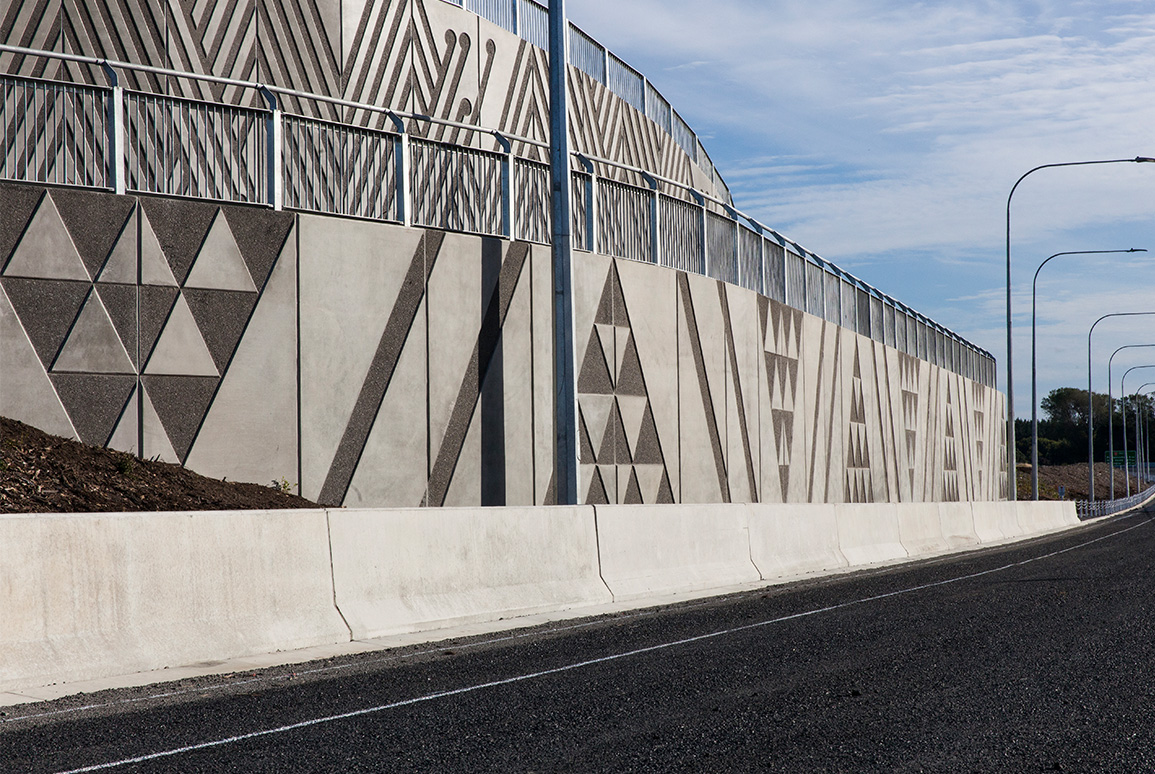Quality outcomes for expressway urban design
23 July 2015
As construction of the M2PP expressway on the Kapiti Coast progresses towards its early-2017 completion, the project’s urban design components are being implemented – but not without challenges.

Boffa Miskell is sub-contracted to the M2PP Alliance to provide input and guidance on urban design and complete the detailed design of all the landscape and ecology aspects of the 16-kilometre expressway. A Board of Inquiry approved the overall expressway concept plan in 2013, subject to complex conditions, including compliance with an urban and landscape design framework. All detailed design must be certified by the Kapiti Coast District Council as meeting the consent conditions and being in ‘general accordance’ with the approved concept.
Translating the concept into tangible site features has exemplified the old adage, ‘the devil is in the detail’, according to Boffa Miskell urban designer, Frazer Baggaley. Inevitably, unforeseen challenges sometimes arise at the site design level, requiring change and affecting other project design work. So, constructive problem solving, involving the wider Alliance project team, has been required to find workable and cost-effective solutions.
“To come up with design options that are technically feasible and true to the urban and landscape design framework, we’ve done a lot of homework to sufficiently understand the technical engineering requirements,” Frazer says. “Above all, our obligation is to integrate the ‘hard’ elements of the expressway with the existing environment, bearing in mind what is appropriate to each local community along the route.”

For instance, Frazer explored various ways to more sensitively design the Kapiti Road interchange – while also reducing cost. He realised that, by altering the alignment of the on/off ramps, the extensive retaining walls could be removed and replaced with planted earth embankments. Distinctive pre-cast concrete panels were also introduced on the bridge abutments to replace the extensive gabion structures originally planned. The improved outcome resulted in cost savings that more than justified the additional design input required to modify the ramps.
Much of the M2PP urban design is quite subtle; aimed at integrating the hard structural elements into a landscape where natural features, such as wetland, the coastal escarpment and the distant outline of Kapiti Island, are important characteristics.
“It’s very much an approach based on simplicity and ensuring that scale, proportions, texture and quality of finish are done right,” Frazer explains.
Noise walls, designed to attenuate traffic noise from adjacent properties, are a case in point. Boffa Miskell has designed them for both visual interest and construction flexibility, so that different site requirements, such as changes in height or curves in the road alignment, can be accommodated without awkward joins and stepped profiles. Etched designs are being imprinted using ‘graphic concrete’ – a world first in such extensive use on an expressway. The product works by printing a pattern on paper with an ink that acts as a concrete curing retarder when placed on concrete, enabling the pattern to be exposed on the concrete panel surface.


